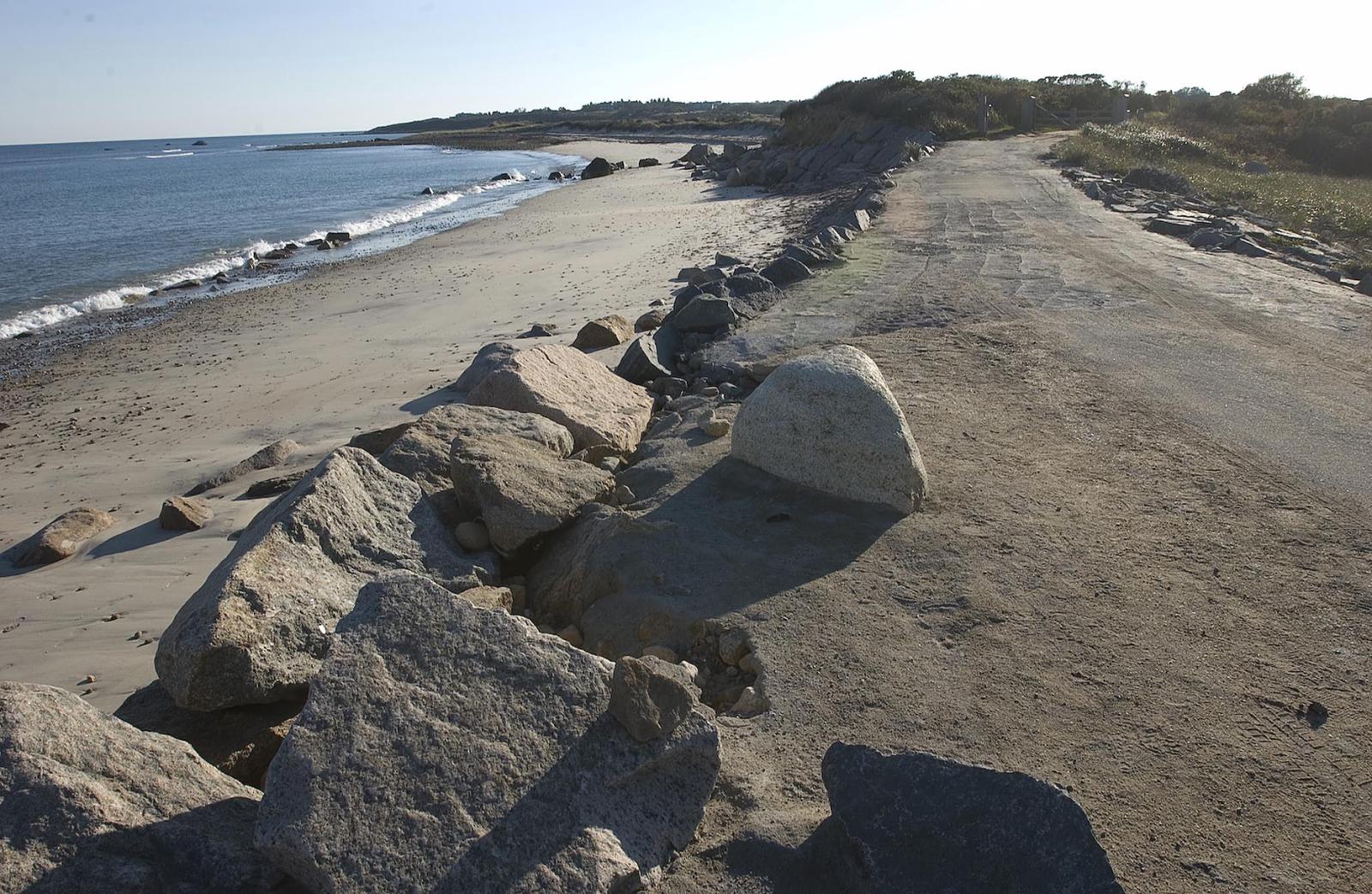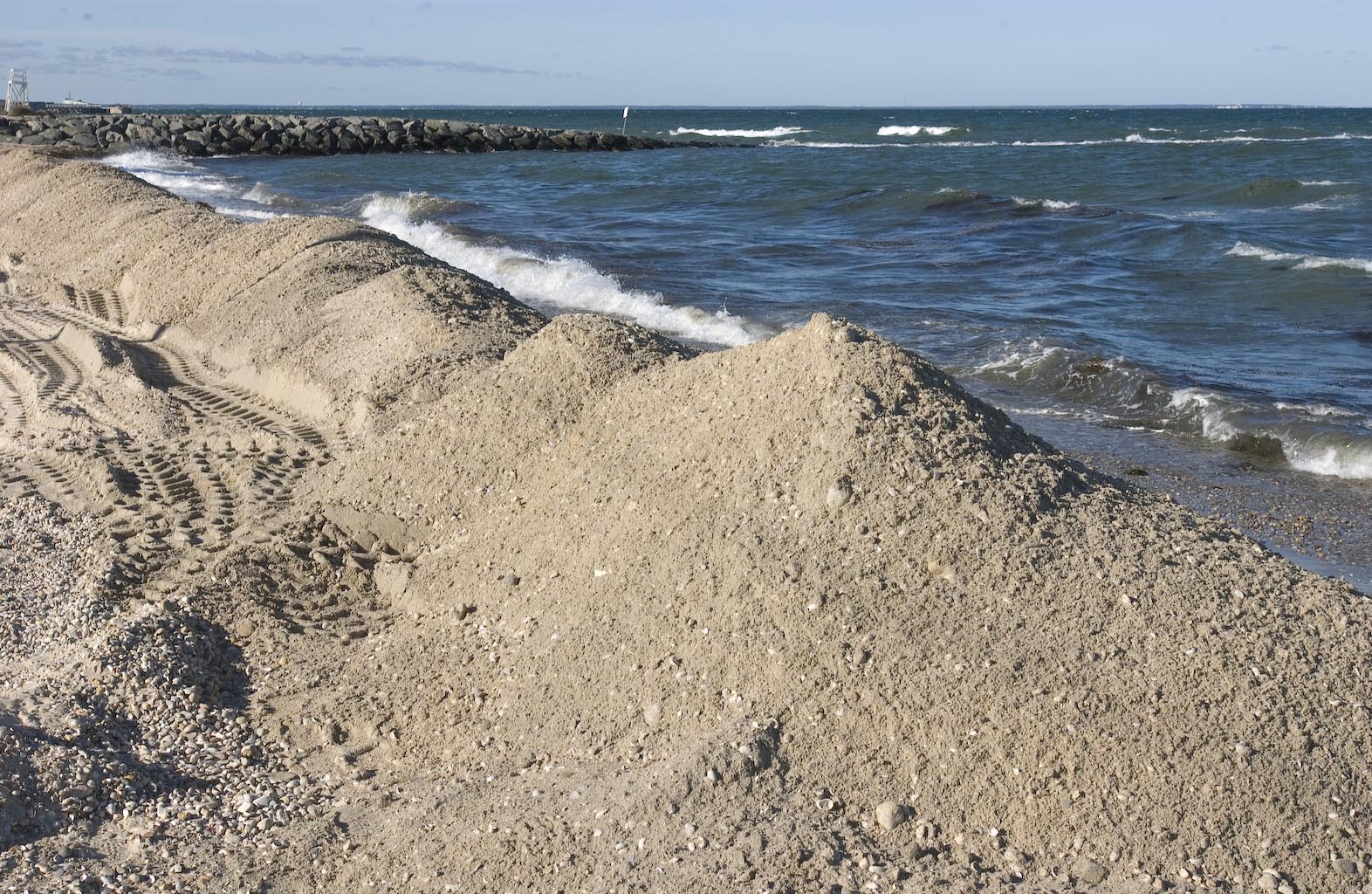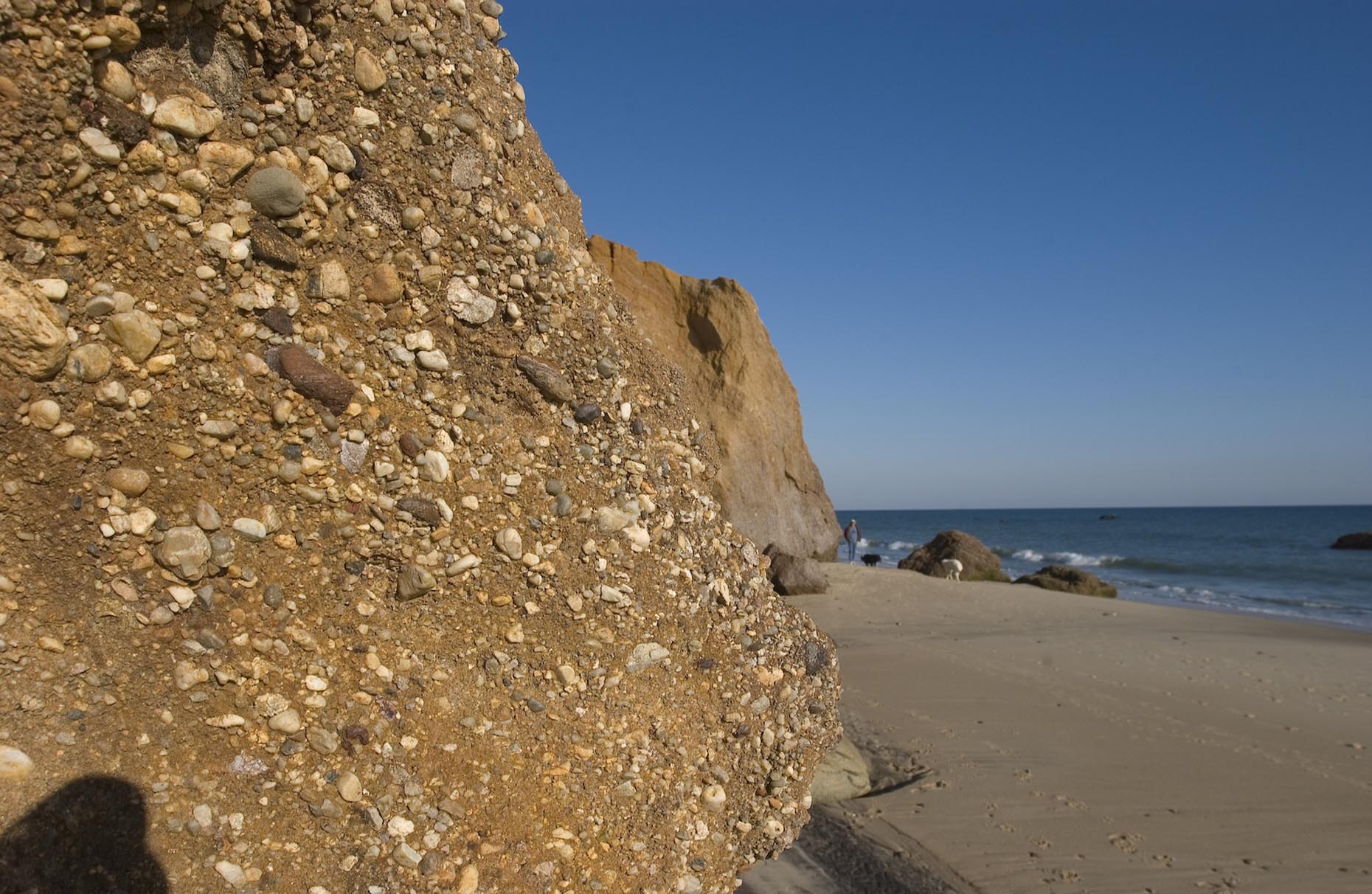The irony of Oak Bluffs is that people so loved its beaches, they set about destroying them.
They built so close to the ocean’s edge they had to defend their development with a seawall. And the seawall prevented the natural replenishment of the sand, so the beach eroded away.
And now, as Dr. S. Jeffress Williams, senior coastal marine geologist with the U.S. Geological Survey in Woods Hole makes quite clear, there are only two choices. Either you remove the concrete armor from the shore and retreat, or you artificially recreate the beaches by bringing sand from somewhere else.
It’s a Hobson’s choice, really. Difficult and expensive as it might be to move vast quantities of sand, it’s cheaper and easier than moving the town.
“The Vineyard coast,” Mr. Williams said, “as most coasts, is suffering the effects of storms and relative rises in sea level and just generally sand-starved conditions.
“As we armor the bluffs to stabilize them and protect houses et cetera, we are cutting off the natural sand supply. Erosion of the bluffs is what feeds the beaches.
“The only solution is to nourish the beaches, either from dredging offshore or trucking sand in from other places.”
There was a time when people thought the answer was groins or jetties, jutting out from the coastline to catch sand as it drifted by with the current. But experience has discredited that idea.
Sure, some sand is caught on the up-drift side of the structure, but erosion actually increases on the down-drift side. Just as freeways are the fastest way of moving a traffic jam from one place to another, so groins are the best way of moving an erosion problem from one place to another.
Oak Bluffs provides a fine example. The rock jetty which makes Pay Beach relatively sandy is the probable reason Inkwell Beach, which adjoins it, has largely disappeared.

of Engineers jetty, has been eaten away in Oak Bluffs. — Mark Alan Lovewell
The people who built these structures did not know about these impacts, and they certainly didn’t know about global warming, but the fact remains that they left a problematic legacy, which is why Oak Bluffs now faces some hard decisions.
Oak Bluffs conservation agent Elizabeth Durkee said the town conservation commission has applied for Community Preservation Act (CPA) money to do three things.
“First is to determine the structural integrity of the seawall along that whole stretch from the harbor down past the Inkwell. There are portions that are really unstable.
“Second, we also want to look at that jetty — one answer might be removal,” Mrs. Durkee said.
“Third, to do what profiling is necessary so we can designate that whole stretch a beach nourishment site should sand become available.”
In the case of the jetty which is affecting Inkwell, removal could be problematic, given the existence of the seawall which starves the beach of sand. Would sand flow onto Inkwell, or just be lost?
In any case, the beach would still need more sand than it now has. And beach needs to be done over and over again.
Said Mr. Williams: “It might last five years or 10 years, or one year, depending on the conditions.”
Said Mrs. Durkee: “Beach nourishment is the only kind of project designed to fail. Because you put it there, and you know it’s going to wash away.”
Sure, it’s a short-term fix, but it can work well. An example of what a program of replenishment can do is to be found just a little further along the coast at State Beach, where it has been happening for more than a decade.
“That’s an example of a successful beach nourishment project,” Mrs. Durkee said. “State Beach has been fortunate because they’ve got the necessary sand close at hand. It builds up in Sengekontacket Pond and they can just shift it to the beach.
“There has been a permit to dredge portions of Sengekontacket and put the material on State Beach for over a decade — [and then] planting dune grass, godenrod, rosa rugosa to hold the sand.”
But solving the problem closer to town is harder, both because of the existence of the seawall and because a source of sand is not so easy to find. The pond can only supply so much, and it would have to be moved further.
Elsewhere in the country, beaches are replenished simply by dredging sand from offshore and pumping it onto the beaches.
“In Florida and other places,” she said, “it’s an annual thing. But in Massachusetts, the Division of Marine Fisheries claims that it’s fish habitat and they don’t want it altered by mining sand. That’s going to be a huge problem of the future. Where else are we going to find the sand?”
One answer could be to find it on land. After all, the whole Island is basically sand.
“I was talking to a coastal engineer yesterday about a small private project on East Chop Drive,” said Mrs. Durkee. “They are probably going to have to take the sand from the pit at Goodales. The irony is, we’re not allowed to mine the sand from offshore, so we’re digging a big hole in the middle of the Island. That’s just bizarre.”
As if the Island is not diminishing fast enough already. Indeed Oak Bluffs is not the worst of it, except for the fact that the town center is so close to the shore. Parts of the Island’s south shore are receding by 10 feet or more a year; the beaches remain because new material is constantly eroding from above. In coming years, this will present an ever-greater threat to homes above the beaches.
“With climate change and the acceleration of sea level rise, all of these issues are just going to get more pressing as we go on,” said Mr. Williams.
“Sea level rise on the Vineyard has been about one foot over the past 100 years, and probably two-thirds of that is due to a global rise in sea level, from climate change — more ice being converted to water and raising the ocean. The other one-third is due to subsidence of the land. The oceans are coming up and the land is going down.
“My own judgment is that sea level rise is likely to double at least and probably triple over the next 100 years. The other issue is the increase in storm activity as we warm the atmosphere and oceans,” he said.
The bottom line seems to be that if the Vineyard wants to maintain the beaches which are so big a part of the attraction of the place, it’s going to take a lot of effort and money.
And it will be a Sisyphean task, endlessly repeated as the sea encroaches.
“No doubt about it,” said Mr. Williams. “It’s very expensive and its not very sustainable; it’s not a long-term solution.
“The trouble is, there really isn’t any long-term solution.”










Comments
Comment policy »